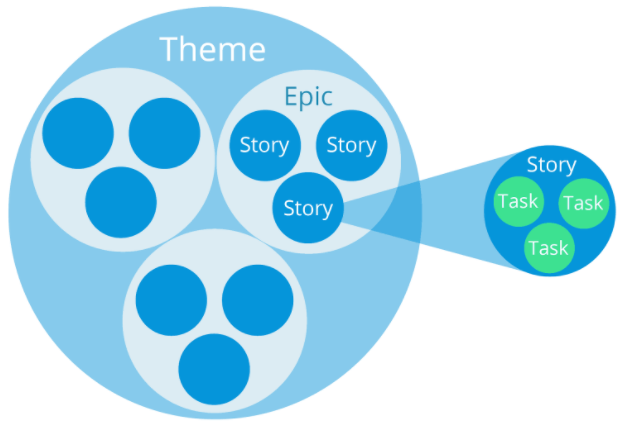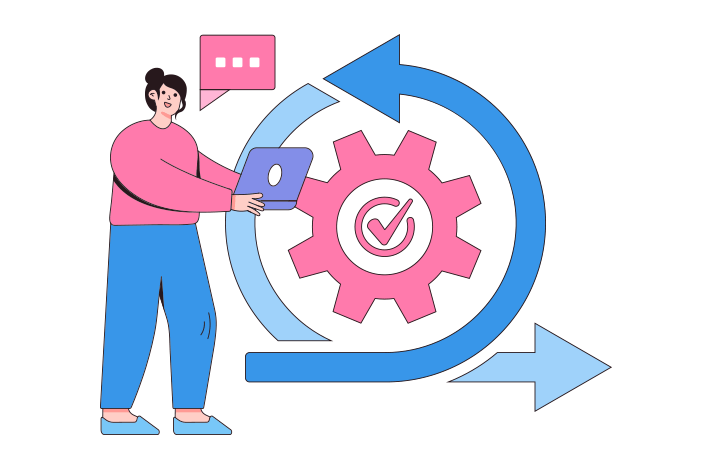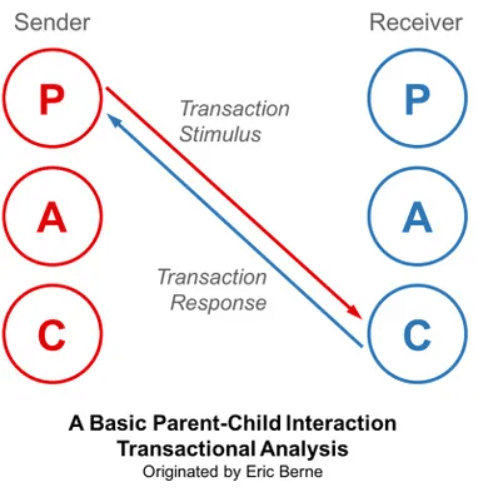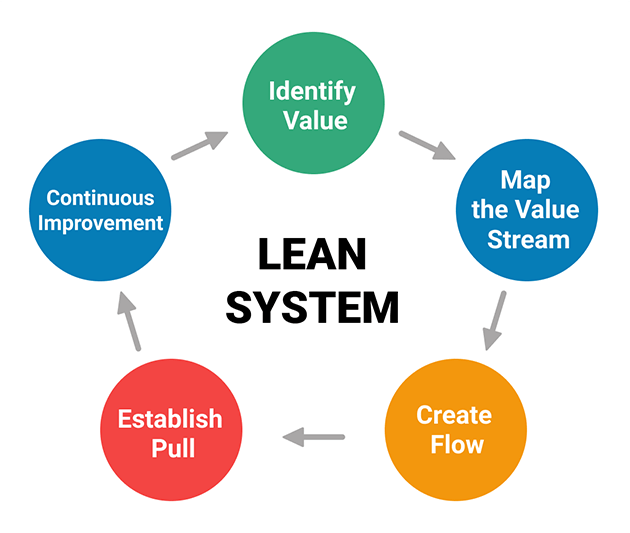You know the game of telephone you would play as a child, when everyone would whisper a message in the ear of another, until the original message sounded like gibberish?
It’s easy for a similar phenomenon to occur within an organization. The CEO and VPs may announce a new plan to senior management, who in turn explain it to the managers who report to them, and on it goes down the chain of command, until a garbled and attenuated message reaches most employees and middle managers.
Yet good communication is critical to an organization. A business is more than the products it creates; really it’s the collective capacity of all its employees. And so building strong relationships is fundamental to achieving success.
A skip level meeting helps with this effort. In part, skip levels are about creating a direct line of communication between senior management and members of the team.
If you’re new to skip level meetings, they probably sound nerve wracking. Maybe you’re the manager and have no idea how to run one or what to discuss at it. Or you’re an employee, and you dread the idea of meeting one-on-one with your boss.
Understanding what a skip level is all about helps to calm these anxieties, and instead allows you to make the most of the meeting.
So whether you’re looking at skip levels from the perspective of a manager or an employee, sit back. We’re about to look at the who, the what and the why, the ins and the outs and the dos and don’ts of skip level meetings.

The What, When & Why of Skip Level Meetings
A skip level is a meeting with the manager your manager reports to. Or it may skip a level higher than that.
The objective is different from a regular one-on-one with your manager, where you may get into the minutia of your daily work. Skip levels, rather, are usually more conversational and have less structure.
Let’s go over some FAQs about skip level meetings.
-
How many people attend a skip level?
Skip levels can be one-on-one, or with several employees. Keeping it under around six people allows the group to be small enough so that everyone has a chance to contribute.
A group setting is advantageous, as employees hear from each other, and sometimes similar issues or concerns arise.
-
How long does a skip level last?
When a skip level is one-on-one, thirty minutes is usually plenty of time. It’s good to have a fifteen minute buffer at the end of the meeting, however, in case it runs over so you don’t have to cut things short.
If it’s a group meeting, then 45 minutes is a better time frame.
-
How often do you have skip levels?
Skip levels can be impromptu or planned. If they’re planned, every two months or quarterly is a good time frame. They may take a lot out of you, so be sure to schedule them at a time when you know you’ll be “on.”
-
What is the purpose of skip levels?
Skip levels are about building relationships and communication channels. Any boss wants his or her team to work in an environment where they like and trust the people around them.
When employees never have a chance to speak to their boss or uppermanagment, they become standoffish, like a cat who lurks in the corner and doesn’t engage. Building trust and embracing everyone as part of the organization takes time, and skip levels play a part.
Skip levels also help a manager understand more about the managers who report to them. This isn’t about looking for gossip or dirty secrets, but rather understanding their leadership styles and how they build team spirit.
In sum, skip levels help build a strong team of employees. Although not all managers find them necessary, they play a significant part in building a transparent culture where employees know one another.

How to Prepare for a Skip Level Meeting
Planning a skip level meeting can be as simple as stopping by an employee’s desk and asking them if they’d like to have lunch that afternoon.
Oftentimes, however, the meetings are scheduled in advance. If that’s the case, here are tips on how managers and employees prepare for one.
-
Manager Preparation
Before scheduling a skip level meeting, let the manager who reports to you know you’re having one, as a courtesy.
Determining the structure and content depends on the culture of your organization, and the personalities involved.
One major goal of the meeting is to develop a bond or relationship with the people you’re meeting with, so do a little research on them beforehand. It’s nice if you can go into the meeting asking about their career or personal hobbies and what not. This makes them feel comfortable and helps to break the ice. It’s a good foundation for building rapport.
Be transparent about the goals and content for the meeting. Sending out an email beforehand lets everyone know what you anticipate for the meeting.
-
Employee Preparation
If you’re an employee, a skip level is an opportunity to make an impression on someone who could play a part in shaping your career path, so it’s helpful to have your head in the game.
Before the meeting, search through past emails for any correspondence you’ve received from this upper manager, or that have been forwarded by your manager. Reading thes over keeps you abreast of any new projects, customers or expansion plans.
Communicate that you’re prepared and focused by dressing well for the occasion, bringing a pen and a notebook to take notes and having a positive and attentive attitude throughout the meeting.

How to Run an Effective Skip Level Meeting
In order to know what to discuss in a skip level meeting, it’s necessary to clarify what you want out of it. Is it relationship building? Or to communicate a message about company changes? Sometimes, it’s about letting the employee know that you appreciate having them on board, and making sure they feel seen, heard, and valued.
Conducting a skip level meeting almost always has the underlying objective to build relationships. Here are some guidelines for doing that.
-
Let it Flow
Although going into a meeting without an agenda is generally a big no-no, a skip level is one exception to the rule. If the aim is to be conversational and unearth issues and concerns, then you want to create space for that. An agenda would be too structured.
-
Aim for Conversation
This meeting isn’t performance based. So shoot for asking lighter questions, and don’t be concerned if they aren’t answered directly. The aim is to get the conversation going.
-
Follow a Pattern
If skip levels are something you do regularly, then find a setup that works for you and go with it. People come to anticipate the pattern and flow of the meetings, which gives the meeting a natural cadence and allows conversation to flow easily.
In sum, the process for a skip level meeting is largely up to you. Understanding your personality; whether gregarious, introverted or something else; is one way to gauge how much structure to give the meeting, and to determine whether or not to prepare a list of questions.

Questions for Skip Level Meetings
It’s good to start a skip level meeting with some fun, icebreaker topics before settling into the heart of the matter. Here are some ideas of questions to ask at a skip level, in order to keep the conversation focused and productive.
Opening and Icebreaker Questions:
- What was your very first job?
- What was the best car you ever owned?
- What is your favorite place for takeout?
Meeting Questions:
- How is your manager supporting your work?
- What is something you wish your manager was doing that they aren’t?
- What questions do you have about decisions your manager made or ways they acted?
- How would you describe the dynamic within your team?
- How does your manager build rapport on the team?
- What other questions do you have?
Asking good questions really shapes the meeting. Put some time into considering where the employee is coming from, and what issues they might have. For example, if they’ve just wrapped up a big project, they’ll probably have a lot to say about that. Asking open ended questions generates conversation.
The Employee Perspective: Making the Most of Skip Levels
Have you ever had a boss sugar coat a difficult situation to the rest of the organization, to the point that it sounded like nothing at all?
“There was a little ripple at the rollout of the project, but it’s all smoothed out now.”
It’s tempting to use a skip level meeting as an opportunity to share your side of the story and explain what really went down. And while the meeting is a window for airing concerns, do so with precaution.
Be sure to pan out beforehand, carefully looking at the entire organization and the politics of the situation you’re heading into. This perspective allows you to be judicious about what you choose to say, and how you say it.
Here are a few ideas for making the most of skip level meetings.
-
Be Mostly Positive
The energy you bring to the meeting reflects a lot about you and your contribution to the team. Saying things like “I’m looking forward to..” and “I’m excited about…” communicates enthusiasm.
It’s appropriate to bring up issues and concerns, but couching them is a good strategy.
Even if it’s hard, spend some time beforehand drumming up positive things to say about your manager and projects you’re working on. The manager you’re meeting with appreciates this, as it reflects on their leadership as well.
-
Communicate Issues With Your Manager First
No one likes being talked about behind his or her back. If you have an issue about how something has been handled on the team, try bringing it up with the person responsible before mentioning it at a skip level.
If the person realizes you discussed it with a third party, it may only make the situation worse.
It’s quite likely that the manager at the skip level won’t take action on the issue, anyway. Rather, he or she may coach you on how to discuss the issue yourself.
-
Ask About Future Plans
The skip level is a window to express enthusiasm for the company. Do some research beforehand and go in with a few open-ended questions that demonstrate your knowledge and dedication to the company’s objectives.
In sum, it’s good to put some thought into a skip level meeting. It’s a window of opportunity to impress someone who might be able to get you a promotion—so make the most of it!

The Benefits of Skip Level Meetings
A skip level, ideally, benefits both the employee and the management. Here are some of the main ways.
-
Build Connection in Remote Teams
In remote teams, the boss and senior managers don’t have unplanned opportunities to speak to employees as they would at an in-person office.
Skip levels, then, really fill a need on remote teams. It’s the only contact managers sometimes have with employees, and so it offers a chance to build some communication and understanding.
-
Discover Fantastic Information
The intent of a skip level isn’t to gush and dish, but rather to appreciate the organization from a different perspective. This is really the key benefit of a skip level. A manager learns about the leadership styles of other managers, and understands the dynamics of various teams in the organization. This big-picture understanding allows them to better manage projects in the future.
-
Demystify the Boss
When a boss or manager isn’t out and about talking to everyone in the organization, it creates a distance and many feel very intimidated by him or her.
By making a habit of grabbing lunch with people from time to time, everyone gets to get to know the boss, and the overall workplace camaraderie increases.
In sum, it’s hard to underscore the benefits of skip levels. You really learn so much from a face-to-face conversation. The manager builds a reputation as being someone people can talk to, and employees feel heard, and like they’re making their mark in the organization.

The Dos and Don’ts of Skip Levels
A skip level provides a real opportunity to build a bridge and learn about the organization from a different point of view. But the strategy you bring to the meeting really affects the outcome. If you’re planning a skip level meeting, here are some guidelines on what to do, and which behaviors and practices to avoid.
Skip Level Dos:
-
Listen
A lot of what you hear in a skip level is feedback on how you’re doing as a manager. So listen actively in order to gain a greater appreciation on how your policies and leadership style affects different players in the organization.
-
Show Curiosity
Building a transparent organization is about acknowledging the value of every employee and what they bring to the team. Be engaged and demonstrate that you’re interested in hearing their perspective, because it matters.
-
Build Up the Immediate Manager
Leadership in an organization is everything. A business with leaders that the team respects adds immeasurable value to the products and services the team creates. And so use the skip level to emphasize good qualities in the employee’s immediate manager, so as to increase his esteem in the employee’s eye.
-
Make it Personal
Skip levels are mostly about getting to know someone. So don’t be shy to stray away from business topics and discuss hobbies, favorite pastimes and what not. When you build this kind of rapport it creates an open door in the relationship, and these people are more likely to reach out to you when they have an issue or concern.
Skip Level Don’ts:
-
Micromanage
A skip level isn’t about discussing everything the employee is doing in her job. That’s more the role of the immediate manager. Taking this approach feels intimidating to the employee. It’s better to take a step back from the day to day and discuss the bigger picture.
-
Criticize the Manager
Even if the meeting unearths unflattering anecdotes about the immediate manager, it isn’t appropriate to berate her. That undermines her position as a leader, and ultimately makes it hard for teams to function.
Mirroring is a better approach to criticism or complaints.
“I see what you’re saying, that sounds frustrating,” works better than, “I can’t believe she said that, how inappropriate.”
Your role as a manager usually isn’t to fix a difficult situation on your own. Rather, the better route is to coach the employee on how he can resolve the issue himself.
In some instances, it is necessary to discuss an issue with the manager directly, but that would happen in a separate meeting.
-
Take a Side Without Doing Research
A skip level may well surface issues and concerns that you formerly knew nothing about. Before making a declarative statement about the issue, do some outside research to understand everything that’s at stake, and then follow up with the employees at a later date.
In sum, when you have good parameters around holding a skip level meeting, they flow better and everyone gets more out of it.
The Follow-Up to Skip Levels
Right after a skip-level meeting, it’s always nice to follow up with a quick email or text, thanking the person for their time and conversation. Additionally, be sure to follow up on anything you said you would. This communicates you’re genuinely interested in their concerns.
Here are a few other things you might do following a skip level meeting.
-
Pass Feedback onto the Manager
When something positive about the immediate manager surfaces at a skip level, take the time to pass it onto him. Maybe the team is really enjoying a new schedule or a certain client. Providing this feedback builds the manager up, and let’s him know what he’s doing right.
-
Record Meeting Notes
It’s a good idea to record everything that was discussed at the meeting, and file it away for easy reference. As it may be a few months before you speak to these employees again, this document makes it easy to follow-up on key topics. For example, if you coached an employee on how to discuss issues with her manager, it’s good to follow up and see how that went.
This continuity allows one meeting to build on the next, and you to build a strong foundation with the employees over time.
-
Keep Notes on the Manager
A skip level meeting is a time where you’ll learn a lot about the manager who reports to you. This feedback is helpful at performance reviews, so be sure to keep a record of good things they’ve done.
In sum, taking these follow-up steps allows everyone to reap the full benefits of the time you spent together.

Don’t Skip It
Skip level meetings provide an opportunity for senior management to appreciate and understand the perspective of employees they don’t regularly interact with. It provides them with a fuller appreciation of everything that’s going on within the organization.
These meetings help improve communication across an organization. A manager learns about team dynamics and the employee builds a relationship with his or her boss.
All in all, skip levels help to build a strong, transparent culture within an organization. So don’t skip it! Schedule a skip level with your team today.


































































